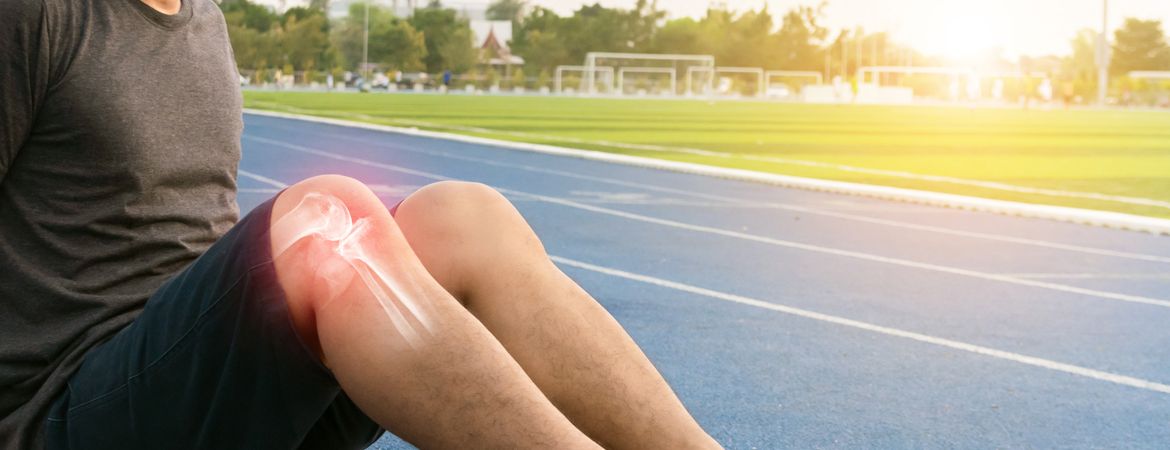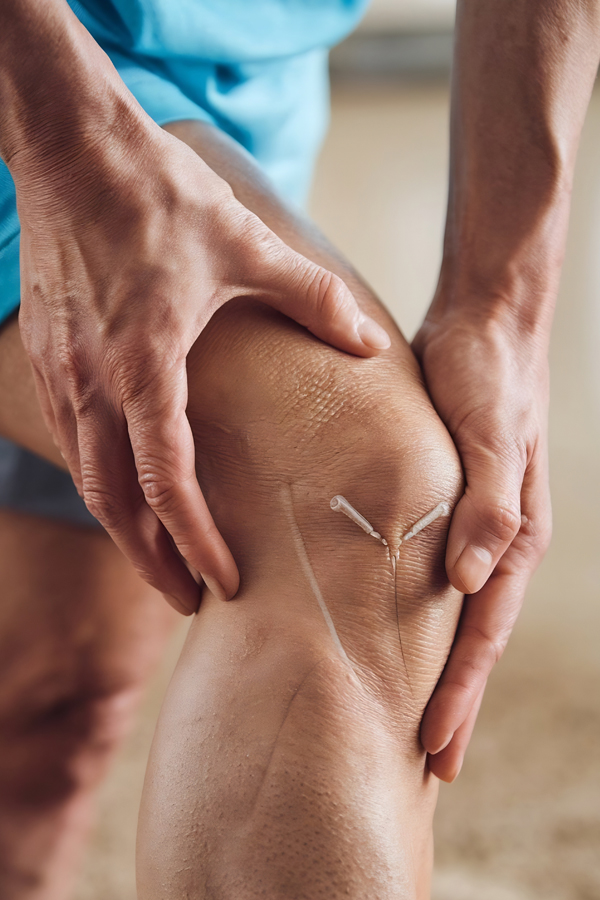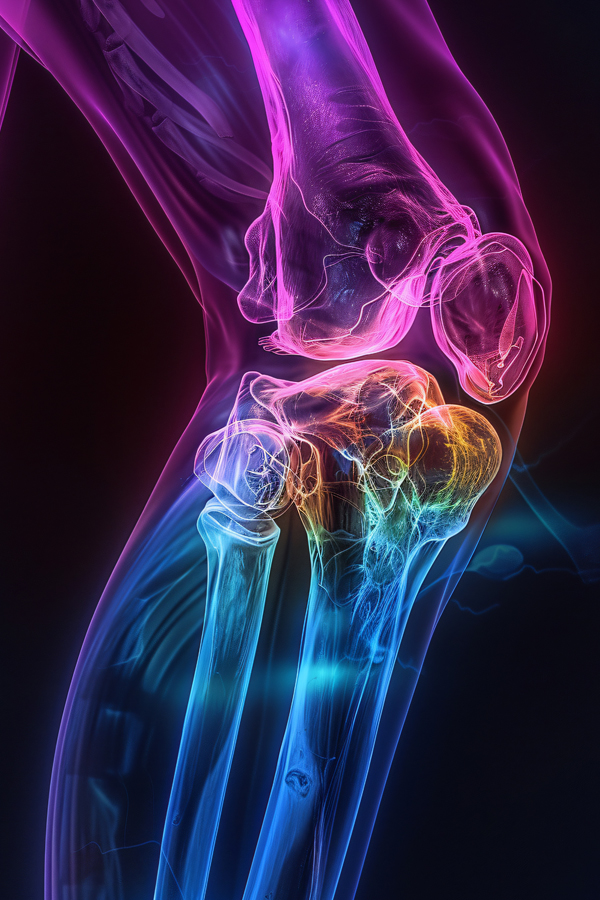
A cruciate ligament tear is a common injury that can significantly impact your daily life, whether you are a passionate athlete or simply an active individual. In this informative article, we reveal everything you need to know about this delicate injury and its implications.
Whether you’re looking to understand the symptoms, causes, or treatment options, we provide clear and concise information to help you navigate this stressful situation. Learn how to prevent injuries, discover the most effective treatments, and understand how to recover fully from a cruciate ligament tear. By staying informed and knowing what steps to take if injured, you’ll be better equipped to care for your health and return to an active life without compromise.
What is a Cruciate Ligament Tear?
A cruciate ligament tear, often referred to as an ACL (anterior cruciate ligament) tear, is a serious injury that typically affects the knee. The cruciate ligaments, of which there are two, are located at the centre of the knee joint and are vital for its stability. These ligaments play a crucial role in controlling the movement of the tibia in relation to the femur, allowing smooth motions and directional changes. Tearing these ligaments can severely compromise the knee’s functionality, making everyday activities difficult.
This injury is particularly common among athletes but can also affect anyone engaging in intense physical activities. Contact sports such as football, rugby, or basketball, as well as activities involving quick movements and sharp directional changes, significantly increase the risk of a tear. Those experiencing such an injury may feel sharp pain and an immediate inability to continue the activity.
It’s essential to understand that a cruciate ligament tear is not just a simple rupture. It can also impact other structures in the knee, such as the cartilage and menisci. A thorough medical evaluation is necessary to determine the extent of the damage and the appropriate treatment options.
Common Causes of Cruciate Ligament Tears
The causes of cruciate ligament tears are varied and can be grouped into two main categories: traumatic causes and degenerative causes. Traumatic causes involve sudden movements, falls, or collisions, which are frequent in sports. For example, a sharp change in direction or an improper landing after a jump can place excessive strain on the ligaments, leading to a tear.
Additionally, anatomical factors can also play a significant role. Some individuals may have a genetic predisposition to weaker ligaments or less stable joints. Abnormalities in knee structure, such as shorter ligaments or irregular knee angles, can also increase the risk of injury. Muscle imbalances, where certain muscles are stronger than others, may further contribute to ligament tears.
Degenerative causes, on the other hand, are often linked to the natural wear and tear of ligaments with age. Over time, ligaments can become less elastic and more prone to tearing under strain. Individuals with osteoarthritis or pre-existing joint problems are at higher risk of ligament tears, even during everyday activities.

Symptoms of ACL Rupture
The symptoms of an anterior cruciate ligament (ACL) rupture can vary depending on the severity of the injury. However, some signs are generally common. The first and most obvious symptom is intense pain at the moment of the injury. This pain can feel like a tear or a blow to the knee and is often accompanied by rapid swelling. In the hours following the injury, the knee may become significantly swollen, making it difficult to bend or straighten.
Another frequent symptom is knee instability. Individuals with an ACL rupture may feel as though their knee is “giving way” or unable to support their weight. This can make walking or even standing extremely difficult. Twisting or pivoting movements may also be particularly painful and risky, increasing the chance of further injury.
Finally, a popping sound may sometimes be heard at the time of the injury, which can be an indicative sign of a rupture. This sound, often described as a “pop,” is commonly associated with ligament injuries. If you experience these symptoms, it is essential to consult a healthcare professional for an accurate diagnosis and appropriate treatment.
Diagnosis and Tests for ACL Rupture
Diagnosing an ACL rupture typically begins with a thorough clinical assessment. This includes a physical examination in which the doctor will check the knee’s stability, pain levels, and range of motion. Specific tests, such as the Lachman test or the anterior drawer test, may be performed to assess the integrity of the ACL.
In addition to a physical examination, imaging tests are often required to confirm the diagnosis. MRI (magnetic resonance imaging) is the most commonly used tool as it provides detailed visuals of the ligaments, menisci, and other internal structures of the knee. This helps determine the extent of the injury and identify any associated damage.
In some cases, an arthroscopy may be considered. This minimally invasive surgical procedure involves inserting a small camera into the knee to directly view the ligaments and surrounding tissues. This not only allows confirmation of the diagnosis but also enables treatment of certain injuries during the same procedure. Accurate diagnosis is crucial for developing an effective treatment plan and ensuring optimal recovery.
Treatment Options for ACL Rupture
Treatment for an ACL rupture depends on the severity of the injury, the individual patient’s needs, and their activity level. Treatment options can be divided into two main categories: non-surgical and surgical. For less severe injuries, conservative treatment may be sufficient. This includes rest, applying ice, compression, and elevation of the knee (the RICE method). Physiotherapy is often recommended to strengthen the muscles around the knee and improve mobility.
For more severe cases, particularly when the injury impacts knee stability or quality of life, surgery may be necessary. ACL reconstruction is one of the most common procedures. This involves replacing the torn ligament with a graft, often taken from the Achilles tendon or another tendon in the body. The goal of this surgery is to restore knee function and prevent further injuries.
After surgery, rigorous follow-up care is essential to ensure a full recovery. Regular physiotherapy sessions are required to rehabilitate the knee, strengthen muscles, and improve flexibility. The decision between conservative or surgical treatment should be thoroughly discussed with a healthcare professional, who can evaluate the benefits and drawbacks of each option based on the individual’s circumstances.
Rehabilitation and Recovery After an Anterior Cruciate Ligament (ACL) Tear
Rehabilitation following an ACL tear is essential to fully recover and regain an optimal level of activity. The rehabilitation process typically begins shortly after the injury, even if surgery has not yet been performed. Gentle exercises are often recommended to maintain range of motion and reduce swelling. The initial goal is to restore knee function while minimising pain.
Once surgery has been carried out, the rehabilitation programme becomes more structured. Physiotherapists design personalised programmes based on the severity of the injury and the patient’s specific needs. These programmes often include strengthening, balance, and coordination exercises aimed at restoring knee stability. Full recovery can take several months, and it is vital to stick to the rehabilitation schedule to avoid complications.
Returning to sports activity should be gradual. Athletes need to progress through stages of reintegration, including sport-specific exercises, gameplay simulations, and functional tests. Regular follow-ups with a healthcare professional are crucial to ensure everything is on track and the knee is ready to handle increased loads. In summary, rehabilitation is a key factor in regaining an active lifestyle and preventing potential relapses.


Prevention of Cruciate Ligament Injuries
Preventing cruciate ligament injuries is a major concern, particularly for athletes and individuals involved in sports activities. Several strategies can be implemented to reduce the risk of rupture. Firstly, proper training is essential. This includes strength training exercises targeting the leg muscles, particularly the quadriceps and hamstrings, which support the knee joint.
Proper movement techniques should also be taught. Athletes need to learn how to land correctly after a jump and perform controlled changes in direction. The use of appropriate footwear and protective equipment can also help prevent injuries. Fitness programmes that include proprioception and agility exercises can further prepare the body for dynamic movements.
Finally, it is important to consider individual factors such as age, gender, and injury history. Women, for instance, are statistically more likely to suffer cruciate ligament ruptures than men, due to anatomical and hormonal differences. It is crucial to adapt prevention programmes to the specific needs of each individual to maximise their effectiveness.
Reconstructive Surgery for Cruciate Ligaments
Reconstructive surgery for cruciate ligaments is often considered an essential option for patients suffering from severe tears. This procedure aims to restore knee stability using a graft, which can be taken from the patient themselves or from a donor. The surgery involves removing the torn ligament and replacing it with the graft, which is secured in place using screws or bone tunnels.
Recovery after reconstructive surgery can be a long and demanding process. Patients must follow a strict rehabilitation protocol that begins in the first few days after the operation. This includes gentle mobility exercises to maintain range of motion and reduce swelling. As healing progresses, exercises become more intensive, focusing on muscle strengthening and functional rehabilitation.
It is also important to note that, while surgery can provide excellent functional results, it is not without risks. Like any surgical procedure, it can result in complications such as infections, bleeding or issues related to the graft. Open communication with the surgeon and a clear understanding of realistic expectations are essential to ensure the success of the surgery and long-term patient satisfaction.
Conclusion and Tips for Taking Care of Your Cruciate Ligaments
In conclusion, a cruciate ligament tear is a serious injury that requires careful attention, both medically and preventively. Understanding the causes, symptoms, and treatment options is key to managing this condition effectively. Equally important is adopting healthy lifestyle habits that minimise the risk of injury, such as proper training and safe movement techniques.
Caring for your cruciate ligaments goes beyond simple prevention. It is crucial to listen to your body and not ignore signs of pain or discomfort. If you are active in sports or engage in intense physical activities, consider consulting a professional for personalised advice on injury prevention.
Finally, recovery from a ligament injury can be a long and challenging process, but with the right support and a proactive approach, it is possible to regain full functionality. Be patient and persistent in your rehabilitation, and remember that every step counts on the road to recovery. Take care of your cruciate ligaments, and they will thank you by allowing you to live an active and fulfilling life.

